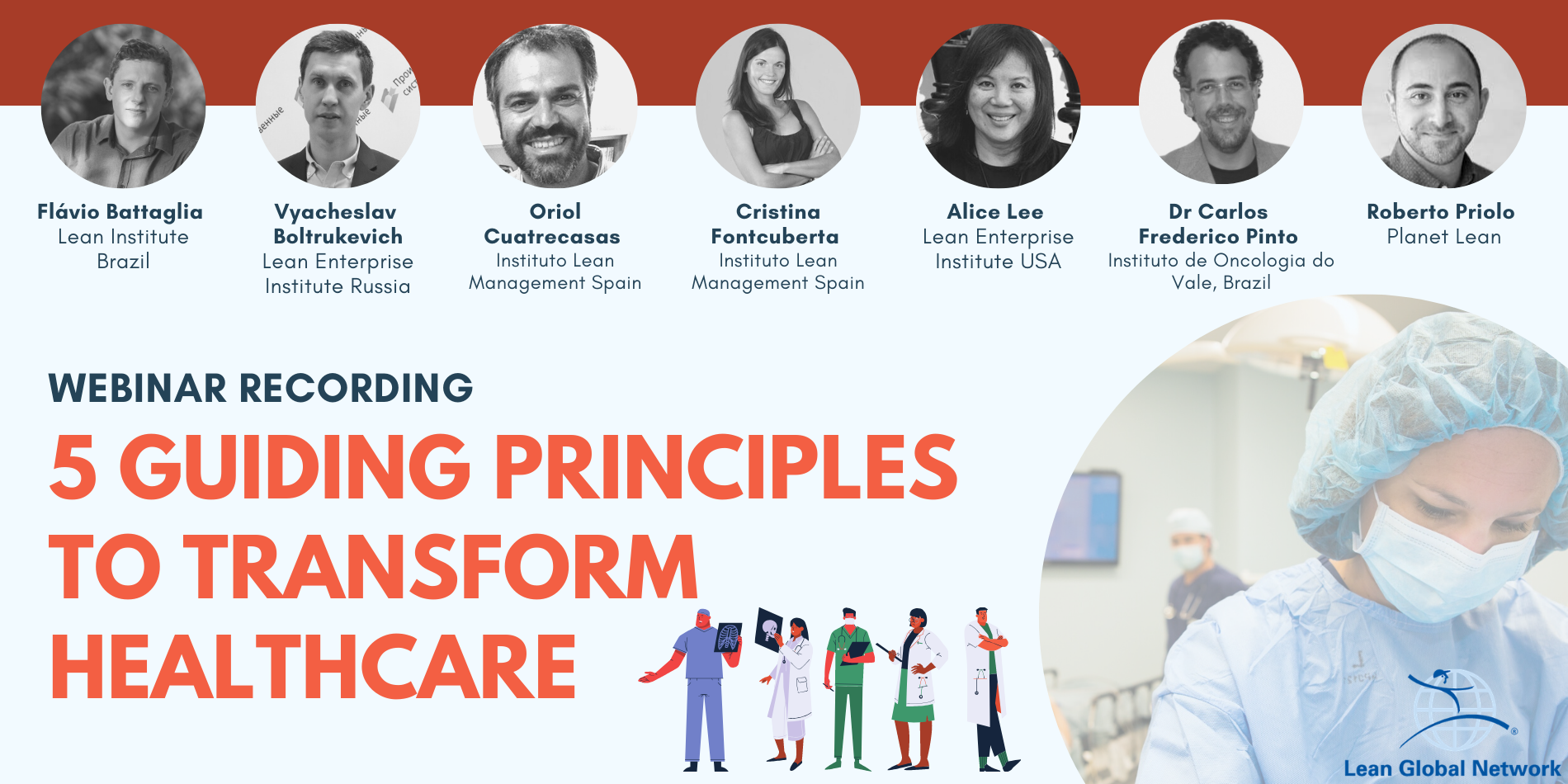
Why lean thinking challenges our assumptions on management
FEATURE - We often hear that lean is a fundamentally different approach, but what does this really mean? The authors reflect on how lean challenges and debunks our assumptions on how to run a firm, which might also explain why it meets such resistance.
Words: Michael Ballé and Jeff Liker
Main picture courtesy of: Kingarion / Shutterstock.com
Many of us in the lean world have pondered why executives find it so hard to "get" lean. We have even seen companies in Japan – outside the Toyota group – struggling to grasp the concept of Just-in-time (as lean is known over there). We are talking about scores of very smart people who seem to completely miss the point of lean. How is it possible? It is a vexing question.
Our hunch is that executives throughout the world have been taught a formula to approach problems, which works quite well in times of aggressive expansion or to exploit power asymmetries (when your side is much stronger than the other on specific points).
In this worldview, the company is seen as a black box and executives, like military generals, strategize on how to exploit the external forces bearing on it (such as Michael Porter's five forces: the threat of new entrants, the bargaining power of buyers, the threat of substitutes, the power of suppliers and the level of industry rivalry).
Their strategy looks outside the business and is all about footprint: which markets they should attack, and where they should position their industrial base to maximize cost advantage. If we consider normal operations as a commodity that we can purchase on the market at lowest cost, strategy as seen by these executives will be executed as designed so long as operations leaders are competent and efficient in leading defined projects.
Footprint strategies are therefore executed through market-acquiring and cost-reduction projects stemming from decisions and orders that come from the top.

Such projects impact operational departments through timeliness and key performance indicators (as they are rolled out, managers are encouraged to do, but not think). Efficiency gains mostly come from killing old activities and starting new ones – the dreaded "changes" the corporate office will then have to change-manage.

This approach is powerful inasmuch as it allows for brutal, targeted changes, much like surgery. A supplier can't align with the required price? Replace it with one in a lower-cost country (and ignore the subsequent logistics, quality and coordination costs). A customer segment is no longer as profitable? Discontinue the product or service and acquire another, perhaps by buying a company. And so on.
This way of doing things is not without merits and has given leaders a way to reorient their businesses by using staff departments to realign line activities on new priorities. Unfortunately, as we've all experienced, this brute-force approach can produce results in the short-term, but over time it often leads to ineffective and inefficient work. Day after day, people react to management edicts and to mounting problems that never really get solved by complying, which quickly replaces their ability to think. Therefore, they feel powerless to fix even the most glaring problems in front of them. We might call this style of management "strategize outside, top-down inside".
Toyota is the original model for lean and what is often missed is the fact that, as a company, it is obsessive about strategy. Toyota senior executives study, reflect, experiment, gather broad input and set ten-year visions, five-year business plans, and each year deploy policies down to the worker on the shop-floor. Their strategy goes well beyond local efficiencies and rarely demands moving parts of the business around like chess pieces. The company is currently working on the future of mobility with investments in hydrogen engines, artificial intelligence, robots that aid mobility, and a breakthrough level of simple, flexible production technologies in the factory.
Toyota, however, does not limit itself to looking outside; it also takes lessons learned back into the organization. Even senior executives roam the gemba and study the capability of each manager down to the work group. They lead efforts to develop capability through daily coaching and practical problem solving. They talk with reverence about the team members who develop other team members, who will then add value by building the vehicles. One can say that they are both "outside in" and "upside down".
Lean thinking often starts at the gemba, from the team and/or production cell, as people produce steady output and guarantee quality and productivity through constant kaizen – which increases safety and offers opportunities for engagement in improving one's own area and the motivation of seeing progress.
Teams coordinate with each other through a pull system, a system of working on demand that specifies a clear relationship between suppliers and their direct customers, and has pre-arranged binary signals (often physical, like kanban) of I am ready for more or not, to trigger work once the current job is completed. Pull gives the overall process the ability to flow better through flexibility and capacity management.

It also makes the gaps between planned and actual work clear, which allows departmental managers to solve their problems one by one, a necessary step in improving service to immediate internal customers and, in the end, the final customers. Indeed, this organic approach results in a completely different strategic outlook where the main focus is on helping customers solve their problems. Toyota, for instance, defines its strategy as helping Toyota owners to solve their mobility problems. At the extreme, helping and satisfying customers leads to the more ambitious goals of benefiting society (whilst putting pressure on competitors, as we've seen with the Volkswagen software cheating debacle).

This upside-down way of thinking is counter-intuitive to most executives, to say the least, because it is organic and not mechanistic – yet, it is also very meticulous and pragmatic at the gemba. No "make it so" grand strategy will work there. You've got to get your hands dirty and understand how concrete facts have large, abstract choice implications and can be brought back down to pragmatic decision making.
A great illustration of such upside-down thinking can be found in the recently published book The Toyota Way to Service Excellence – see image below (courtesy of Bill Constantino). The organization chart is flipped with those adding direct value to customers at the top of the chart, and the following structure: a team leader for every five-operator team, then a group leader to support five teams, then area managers and so forth. The upside-down thinking is that management supports front-line staff, rather than staff reporting to management. For management and support organizations the only way they can be useful to customers is through empowering value-adding workers.

Abstract concepts like working to customer demand, using pull systems to control production, stopping the line, and standardizing work are only realized in practice by highly functioning work groups. As an abstract concept, a pull system represents the vision of how customer demand propagates backward through the system to trigger production even to external suppliers. Its execution requires far more than a signal that tells all the players what is expected of them: it must be realized by local actors working at all levels of the organization. The work group must build to the customer demand rate flawlessly, without the safety net of inventory. We often see in well-run work groups hour-by-hour boards that provide the plan in an easy to understand visual display and each hour the actual figure produced appears on the board. Differences between planned and actual are the basis for continuous improvement, and any improvement in the process forces team members to think and build their capacity for improvement.
In practical terms, the pull system aligns the cell demand with the final customer demand (with some leveling), and it is up to management to support each cell for 100% schedule attainment, hour after hour. This involves solving many day-to-day problems and is the key mechanism to direct kaizen – small-step improvement – towards the improvement of the whole system at the macro-level.
Although hard to fathom at first, it turns out that this upside-down, outside-in approach to managing complex situations is more effective at dealing with a highly competitive environment where all the traditional Porter forces are at play in full force.
The traditional "footprint-project-department" approach works very well in cases of asymmetric power, where might is right, and is actually designed to exploit the weaknesses of customers, suppliers, competitors or alternative technologies. It draws power from its own assertiveness.
The "team-pull-help customers" model, on the other hand, has proved to be very effective at dealing with tough competitive situations where the balance of power with customers, suppliers, technological partners and other stakeholders is mostly even (precisely because coordinating resources is the foundational intent of pull and just-in-time).
Looking at it this way, we propose two broad implications:
- First, lean is still as relevant as when the term was coined over 30 years ago because in the absence of large historical movements – such as reconstruction after WWII, expansion in Eastern Europe or catch-up of developing countries – markets tend to balance out in a low-margin, high-competition equilibrium (unless monopolies establish themselves, recreating the power imbalance). Lean is the approach for competitive markets.
- Second, executives whose careers and successes have been defined by exploiting market asymmetries, and whose self-esteem rests on their ability to forcefully push forward projects in order to purchase a market or reduce costs, will by nature find it extremely difficult to grasp the logic (or indeed the advantages) of an upside-down lean worldview.
Clearly, this is speculative and it is hard to imagine a practical way of testing these assumptions, but if our intuition is correct, the resistance to the lean way of thinking goes much deeper than people simply "not getting it". Most human reasoning is motivated: we start with the conclusion we like and then work back to the argument that justifies it. Scientific thinking turns this upside down (rather painfully) by challenging each assertion in the argument and demanding empirical proofs, so that the sequence of validated ideas (once you've chipped away all the misconceptions) takes you to new, unexpected, and sometimes unpleasant conclusions.
The only thing we're certain of is that thinking upside down is the key to always looking for a better way. And it's fun!
THE AUTHORS

Michael Ballé is co-founder of the Institut Lean France. An associate researcher at Telecom ParisTech, he holds a doctorate from the Sorbonne in Social Sciences and Knowledge Sciences. Michael is a best-selling author and an engaging speaker, and managing partner of ESG Consultants. He also works as a lean executive coach in various fields, from manufacturing to engineering, services to healthcare.

Jeffrey K. Liker is Professor of Industrial and Operations Engineering at the University of Michigan and president of Liker Lean Advisors. He is author of several best-sellers, including The Toyota Way: 14 Management Principles; Toyota Under Fire: Lessons for Turning Crisis Into Opportunity; and The Toyota Way to Lean Leadership. His articles and books have won nine Shingo Prizes for Research Excellence.
Read more


INTERVIEW – If we truly believe lean can change society, then we should use it as a lens through which to look into different aspects of our lives – even when those associations are hard to make. This month, we discuss the world of media.


ARTICLE - Organizing for learning is critical to sustaining your kaizen efforts and improving your company. Choose the right managers, make sure they can self-develop and develop others, and help lean to take root.


WEBINAR - The Lean Healthcare Initiative teams presents the results of their research and provide five guidelines to successfully transform healthcare organizations.


COLUMN – In the first of a new series, Boaz Tamir explains how understanding the knowledge and development capabilities of our team can provide the foundations for more dynamic and safer innovation.

